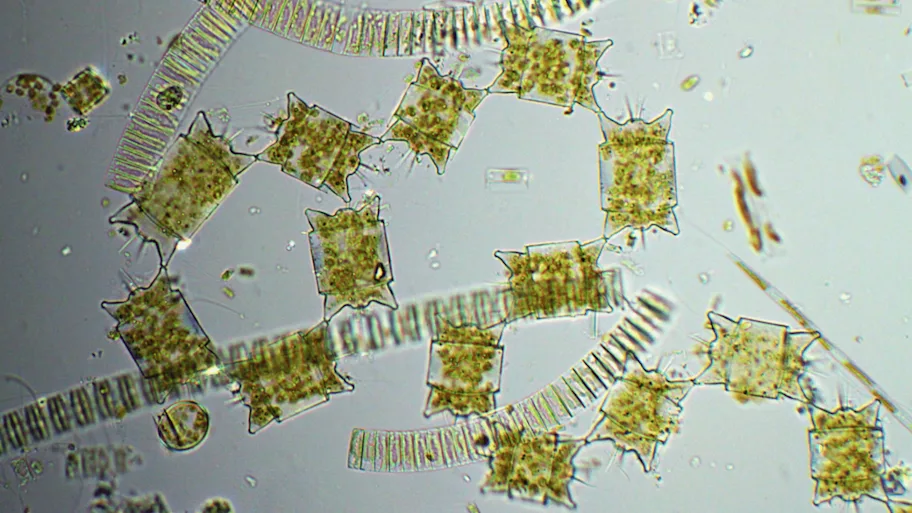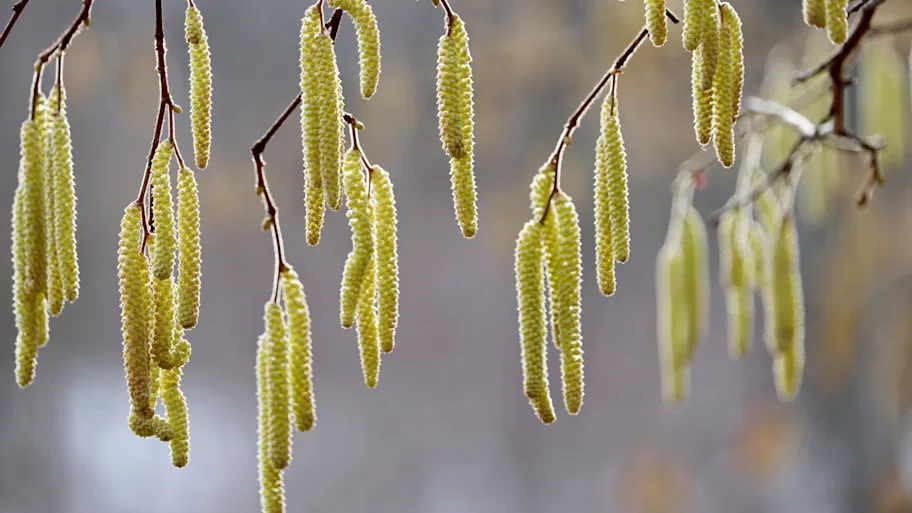
- Science News
- Environment
- Secret behind spectacular blooms in world’s driest desert is invisible to human eyes
Secret behind spectacular blooms in world’s driest desert is invisible to human eyes
By Mischa Dijkstra, Frontiers science writer

The 2021 'desierto florido' near Caldera, Chile. The purple flowers are the pussypaw Cistanthe longiscapa (family Montiaceae), the object of this study. Image credit: Oven Pérez-Nates
A ‘desierto florido’ mass bloom happened in the northern Atacama desert in 2021, which was even visible from space. Researchers used advanced imaging techniques to measure the variation in flower color and pattern for the dominant species, the pussypaw Cistanthe longiscapa_. They found that this variation is much greater when viewed by the UV-sensitive eyes of hymenopteran pollinators, and caused by differences in the mix of betalain pigments in the petals. Evolution is probably ongoing, driven by the species-specific visual preferences of pollinators, which could ultimately lead to new species._
The Atacama desert, which stretches for approximately 1,600 km along the western coast of the cone of South America, is the driest place on Earth. Some weather stations there have never recorded rainfall throughout their existence. But it‘s far from barren: many species live here that occur nowhere else, adapted to its extreme conditions. And approximately every five to 10 years, from September to mid-November, the Atacama hosts one of the most spectacular sights of the natural world: the ‘desierto florido’ (literally ‘blooming desert’). These mass blooms, one of which is currently going on in the northern Atacama after abundant rainfall earlier this year, often attract media attention from around the globe.
But which physiological and evolutionary mechanisms enable the great diversity of colors, shapes, and visual patterns of flowers during desiertos floridos? And how do pollinators – in the Atacama, mainly hymenopterans like solitary wasps and bees – for whose benefit this visual extravaganza evolved, perceive all this variation? That’s the subject of a new study in Frontiers in Ecology and Evolution.
► Read original article► Download original article (pdf)
“Our aim was to shed light on the ecological and evolutionary mechanisms that cause biological diversity in extreme environments like the Atacama desert,” said first author Dr Jaime Martínez-Harms, a researcher at the Institute of Agricultural Research in La Cruz, Chile.
“Here we show that flowers of the pussypaw Cistanthe longiscapa, a representative species for desiertos floridos in the Atacama desert, are highly variable in the color and patterns they present to pollinators. This variability probably results from different so-called ‘betalain’ pigments in the flower petals.”
Model species
Martínez-Harms and colleagues studied a desierto florido event in late 2021 near the city of Caldera in northern Chile. Despite being smaller in size than the event currently going on, it was clearly visible to satellites. A dominant species was C. longiscapa (family Montiaceae), an annual plant up to 20 cm high, which bloomed in two distinct patches tens of km across. These patches consisted of – to human eyes – uniformly purple and yellow flowers. Between them grew numerous intermediate (ie, reddish, pinkish, and white) flowers of the same species, strongly suggesting that the purple and yellow morphs are heritable variants that can interbreed.
Visualizing flowers as insects see them
Insects, with their compound eyes and different sensitivities, see the world very differently than we do. For example, most hymenopterans have three types of photoreceptors, which are maximally sensitive to UV, blue, and green. Martínez-Harms et al. used cameras sensitive to visible light and UV and spectrometers to measure the reflection, absorption, and transmission of different wavelengths by the petals of a total of 110 purple, yellow, red, pink, and white C. longiscapa flowers. This enabled them to produce composite images of these variants as seen by their many species of pollinators.
Diversity hidden from human eyes
The results show that just within this single plant species, the diversity perceptible to pollinators was greater than to us. For example, hymenopterans, just like us, can easily distinguish between red, purple, white, and yellow variants. But they can also distinguish between flowers with a high versus a low UV reflection among yellow and purple flowers. A UV ‘bullseye pattern’ at the heart of some flowers, which guides pollinators to the nectar and pollen, is invisible to us.
An exception are UV-reflecting pink and reddish C. longiscapa, which are quite distinct to human eyes, but probably appear similar to hymenopterans.
This visual diversity of C. longiscapa flowers is probably mainly due to differences between betalains – yellow, orange, and purple pigments that are a typical trait of the plant order Caryophyllales to which the pussypaws belong. Betalains don’t just give colors to flowers: they also protect from drought, salt stress, and damage from reactive oxygen radicals under environmental stress – traits highly beneficial in deserts.
Pollinators drive selection for new variants
The authors hypothesized that the observed standing diversity within C. longiscapa flowers is driven by differences in the sensitivity and preference for different colors and patterns across many species of pollinators: an evolutionary experiment going on right now, which mostly escapes our eyesight.
“The great variation in flower color within C. longiscapa can be explained if different species of pollinating insects, through their preference for particular flower colors and patterns, could cause these variants to become reproductively isolated from other individuals of the same plant species. This ongoing process could ultimately lead to the origin of new races or species,” said Martínez-Harms.
“In our next studies, we will further investigate the chemical identity and the biological synthesis pathways of betalains and other flower pigments, as well as their relationship to traits such as the scents produced by the flowers. This should help us to understand their role in shaping the interactions between plants and their pollinators, and in the plants’ tolerance to biotic and abiotic stressors under fluctuating climate conditions,” said Martínez-Harms.

The 'desierto florido' event in Sep-Nov 2021 near the city of Caldera, Chile, as viewed by satellite. The mass bloom is dominated by purple pussypaws Cistanthe longiscapa (family Montiaceae). Image credit: European Union, Copernicus Sentinel-2 imagery

Cistanthe longiscapa (family Montiaceae), the object of this study. Image credit: Oven Pérez-Nates

Taken during the 2021 'desierto florido'. The purple background is due to the pussypaw Cistanthe longiscapa, the object of this study. Image credit: Oven Pérez-Nates

Taken during the 2021 'desierto florido'. The purple flowers are mainly the pussypaw Cistanthe longiscapa, the object of this study. Image credit: Oven Pérez-Nates
REPUBLISHING GUIDELINES: Open access and sharing research is part of Frontiers’ mission. Unless otherwise noted, you can republish articles posted in the Frontiers news site — as long as you include a link back to the original research. Selling the articles is not allowed.






